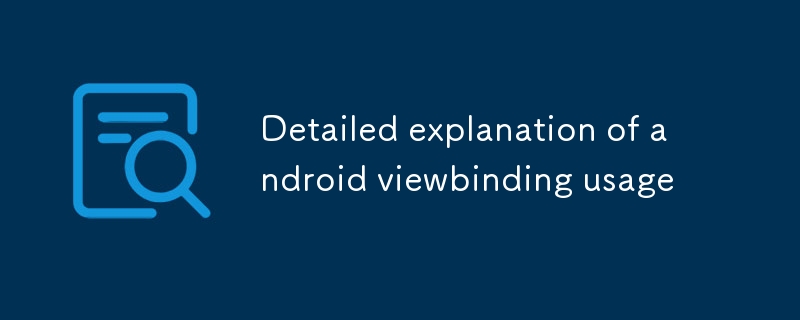
This article discusses performance optimizations for Android View Binding. It highlights techniques to minimize inflate operations, cache inflated views, use synthetic constructors, and leverage '<include>' tags. It also explores advant

Optimizing Android View Binding for Performance
To optimize Android View Binding for performance, consider the following techniques:
inflate() multiple times for the same layout. Instead, store the inflated object in a variable and reuse it as needed.gradle.properties file by setting android.enableSelfDestruct=true.<include> tags: If you have common UI elements that are used across multiple layouts, consider using <include> tags to reduce inflation overhead.Advantages and Disadvantages of Android View Binding
Advantages:
Disadvantages:
Handling Complex View Hierarchies with Android View Binding
To handle complex view hierarchies with Android View Binding:
The above is the detailed content of Detailed explanation of android viewbinding usage. For more information, please follow other related articles on the PHP Chinese website!
 What are the methods of rounding in sql
What are the methods of rounding in sql
 How to open WeChat html file
How to open WeChat html file
 Introduction to architectural drawing software
Introduction to architectural drawing software
 How to make a round picture in ppt
How to make a round picture in ppt
 How to solve the problem of 400 bad request when the web page displays
How to solve the problem of 400 bad request when the web page displays
 Commonly used techniques for web crawlers
Commonly used techniques for web crawlers
 Usage of source command in linux
Usage of source command in linux
 How to open state file
How to open state file




